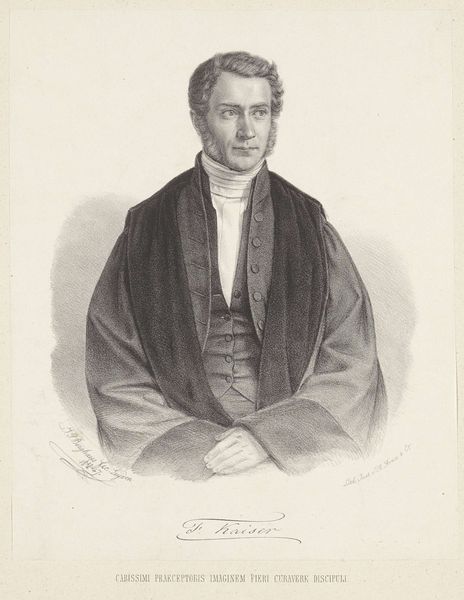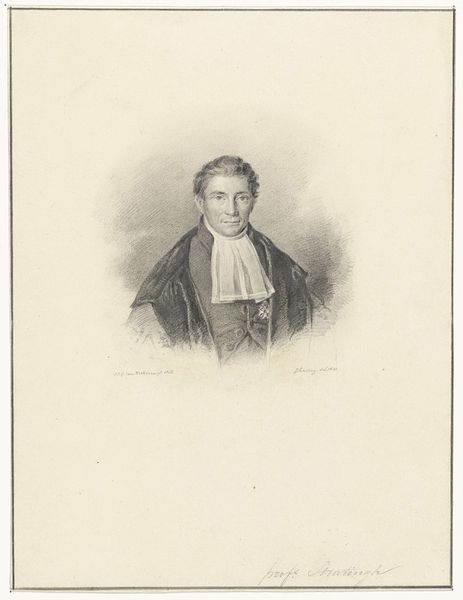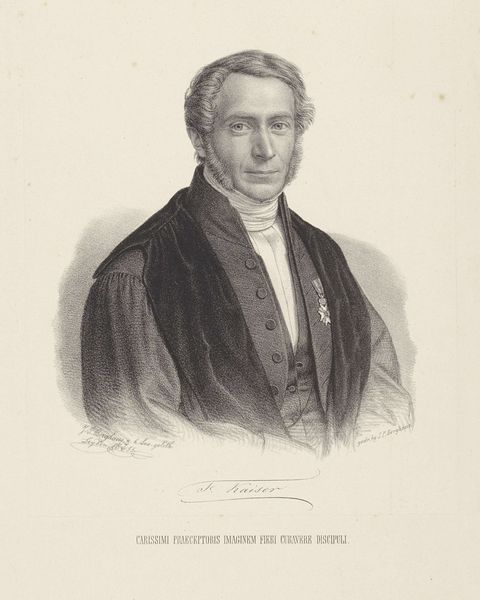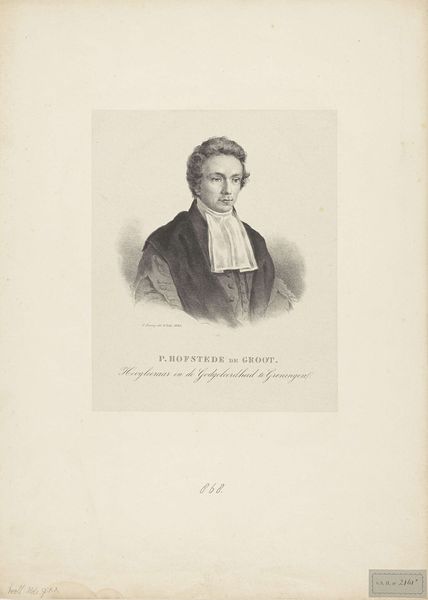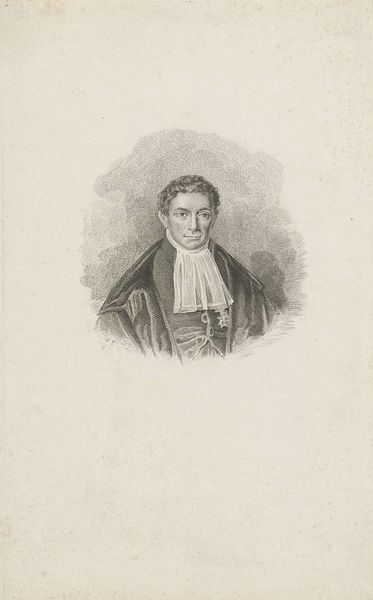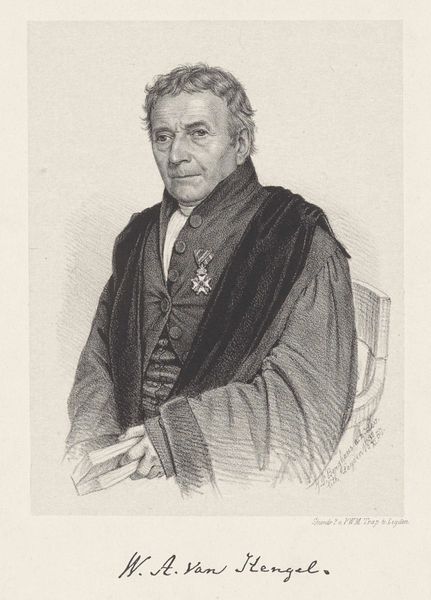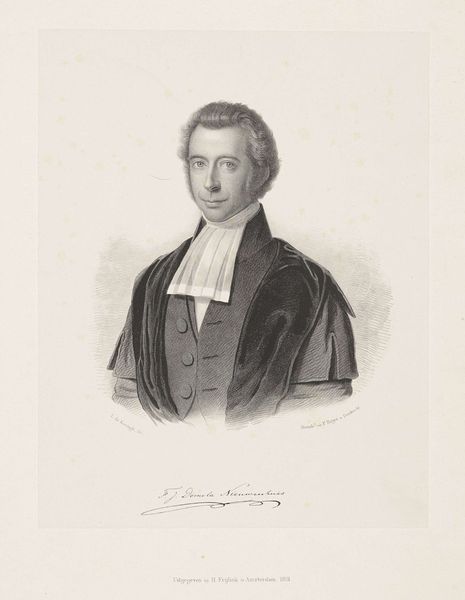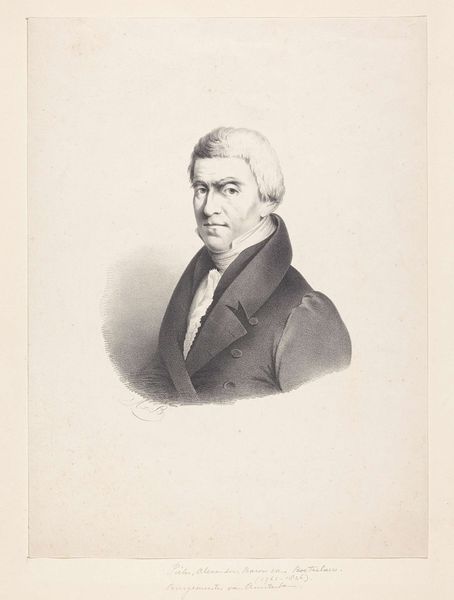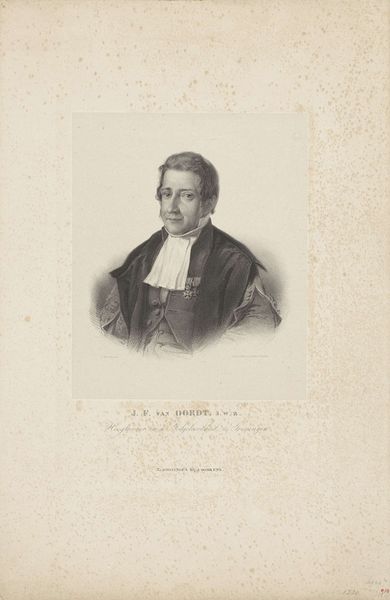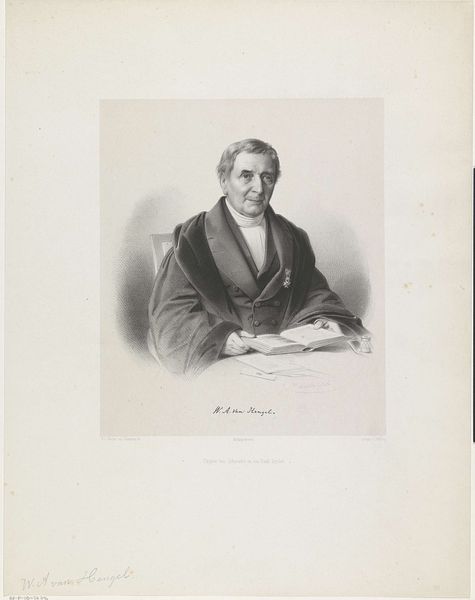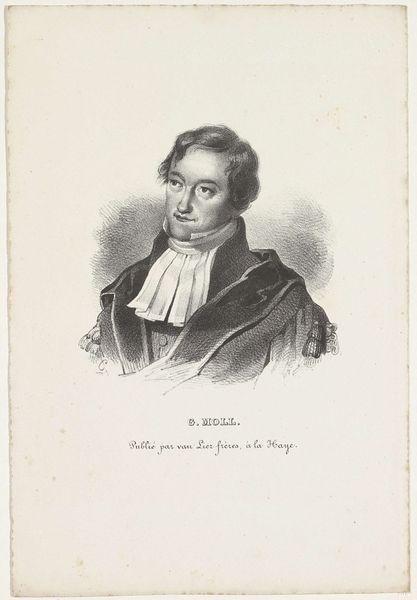
#
pencil drawn
#
facial expression drawing
#
light pencil work
#
pencil sketch
#
charcoal drawing
#
portrait reference
#
pencil drawing
#
yellow element
#
portrait drawing
#
pencil work
Dimensions: height 385 mm, width 306 mm
Copyright: Rijks Museum: Open Domain
Editor: Here we have Jan Ensing’s "Portret van Frederik Christiaan de Greuve," made sometime between 1829 and 1894. It’s a pencil drawing, and the subject's gaze makes me wonder what he's contemplating. How do you read this portrait? Curator: The image certainly invites contemplation. Consider the time period: mid-19th century. The subject's attire suggests a person of status, perhaps a clergyman or academic. Ensing captures a particular kind of male intellectualism that was deeply rooted in societal power structures. What do you make of the sitter’s slightly averted gaze and hand gesture? Editor: He looks like he’s avoiding eye contact, or perhaps lost in thought. His hand is casually placed; is it meant to convey something about his character? Curator: Exactly. Think about portraiture conventions of the era. Artists were tasked with representing not just likeness but also social standing and moral character. The averted gaze could symbolize modesty or a deeper, more internalized intellect, aligning with philosophical ideals of the time that favored introspection. What social issues might someone like him have been engaging with or perhaps complicit in? Editor: So it's a conscious choice to portray him this way, placing him within the intellectual and social contexts of his time, maybe commenting on privilege or responsibility. The artist is really making a statement beyond just depicting the subject. Curator: Precisely. This portrait serves as a window into the construction of identity during the 19th century, inviting us to reflect on the role of portraiture in reinforcing or challenging prevailing power dynamics. It's much more than just a drawing of a man. Editor: That adds so much depth to the piece. I'm seeing the portrait as more than just an individual likeness, but as a statement about the social and intellectual climate of the time. Curator: Absolutely, it's about critically engaging with history. It's taught me to consider portraiture beyond mere representation and explore the socio-political contexts woven into the very act of depicting someone.
Comments
No comments
Be the first to comment and join the conversation on the ultimate creative platform.
